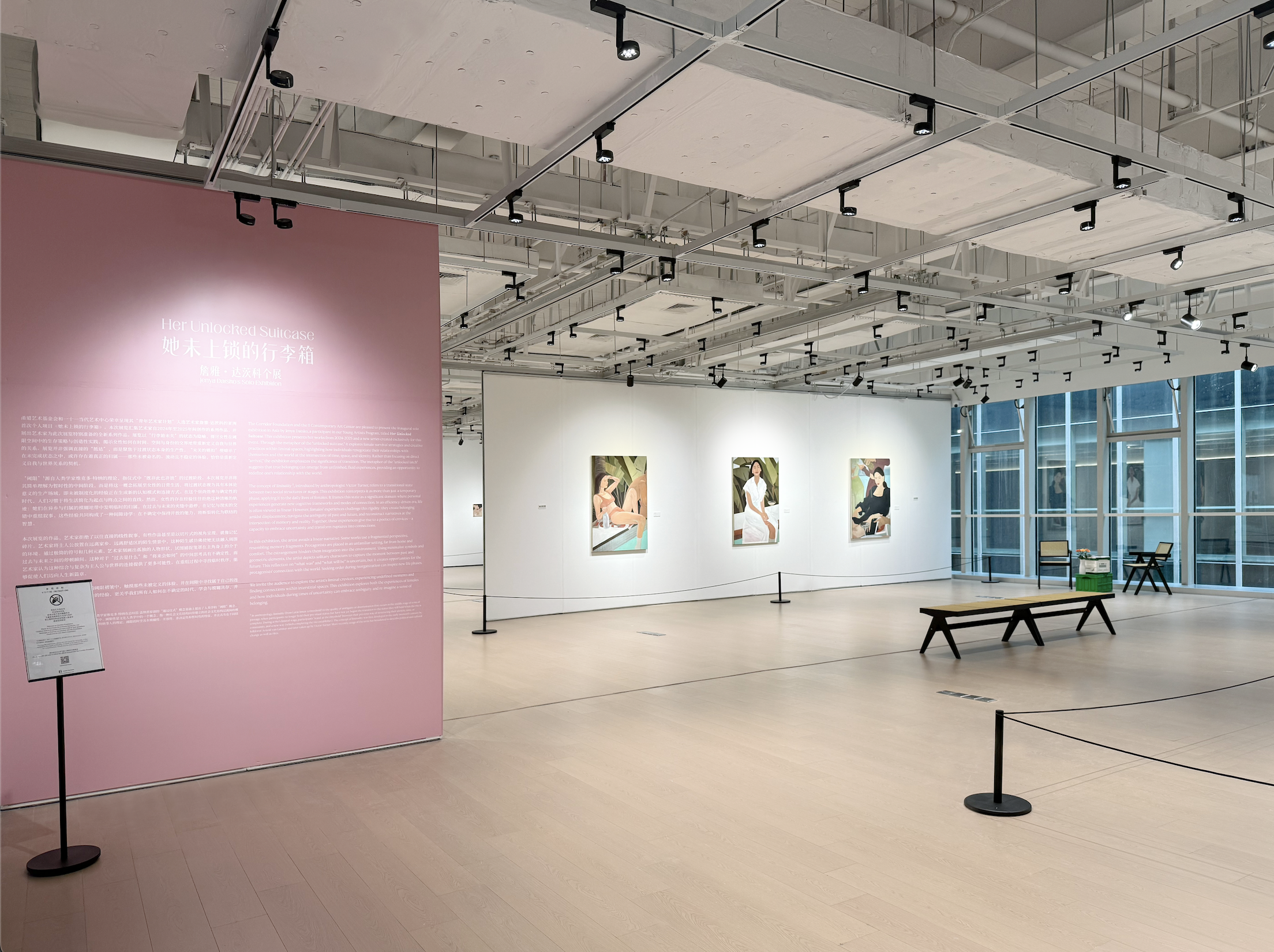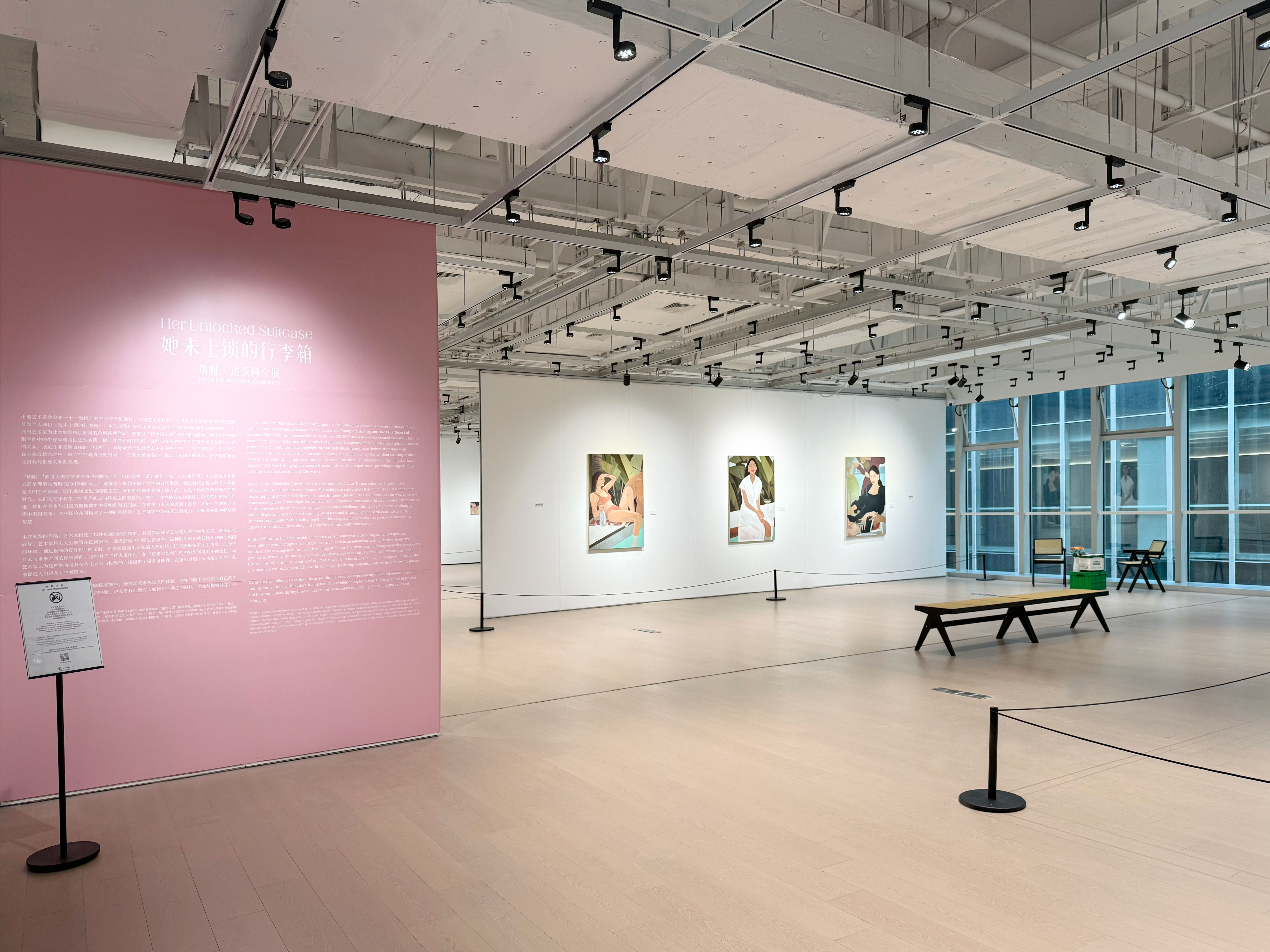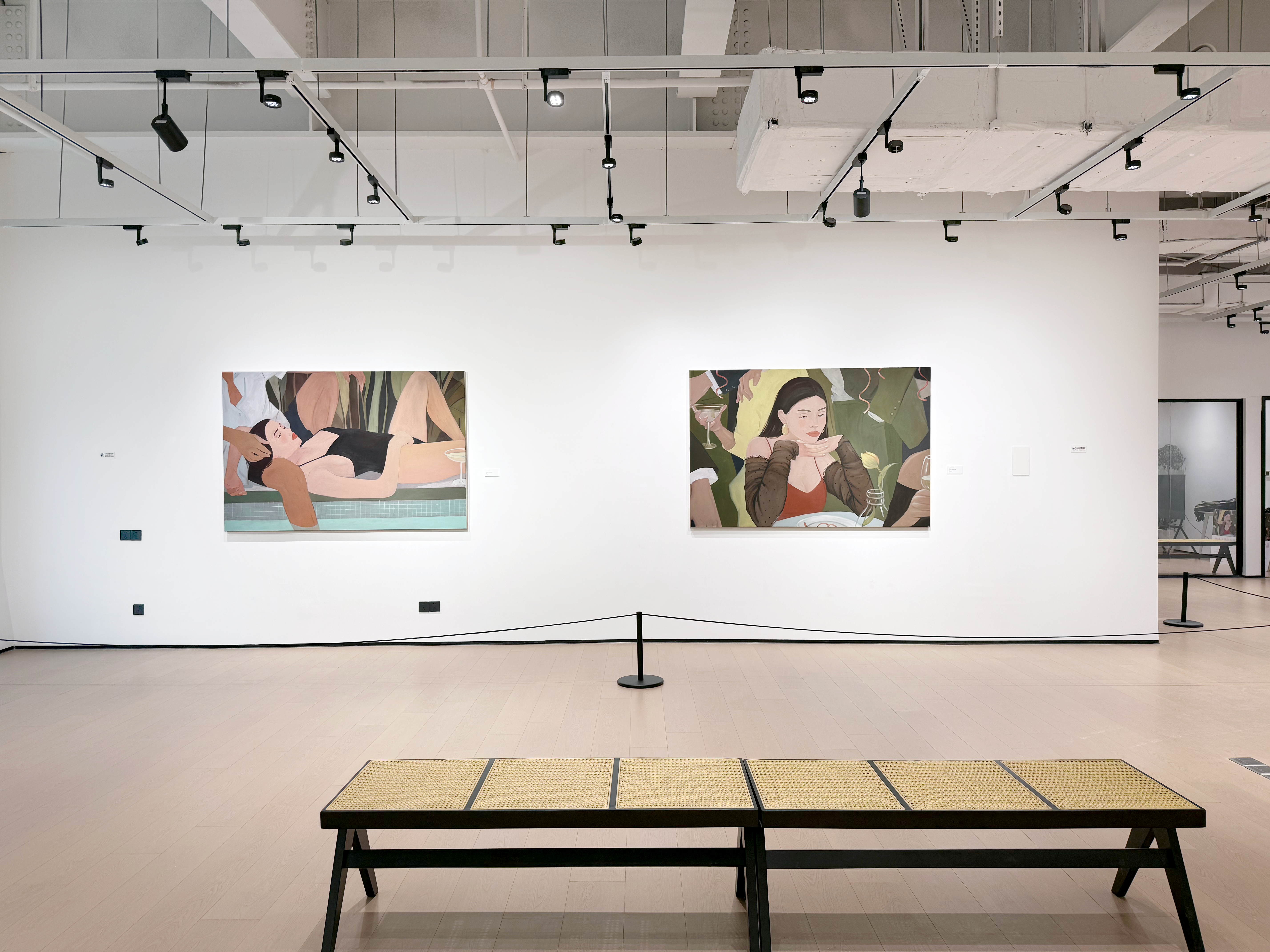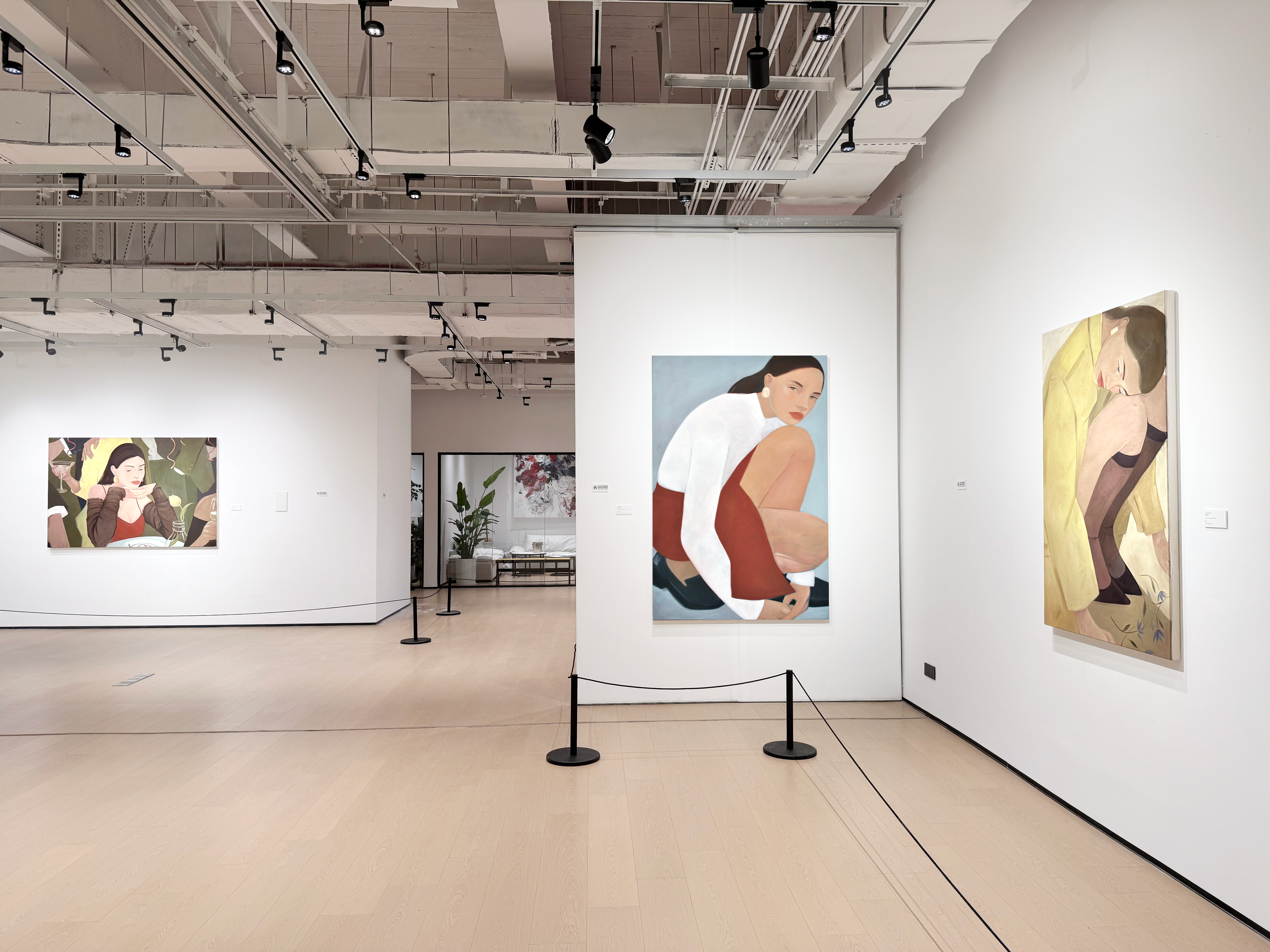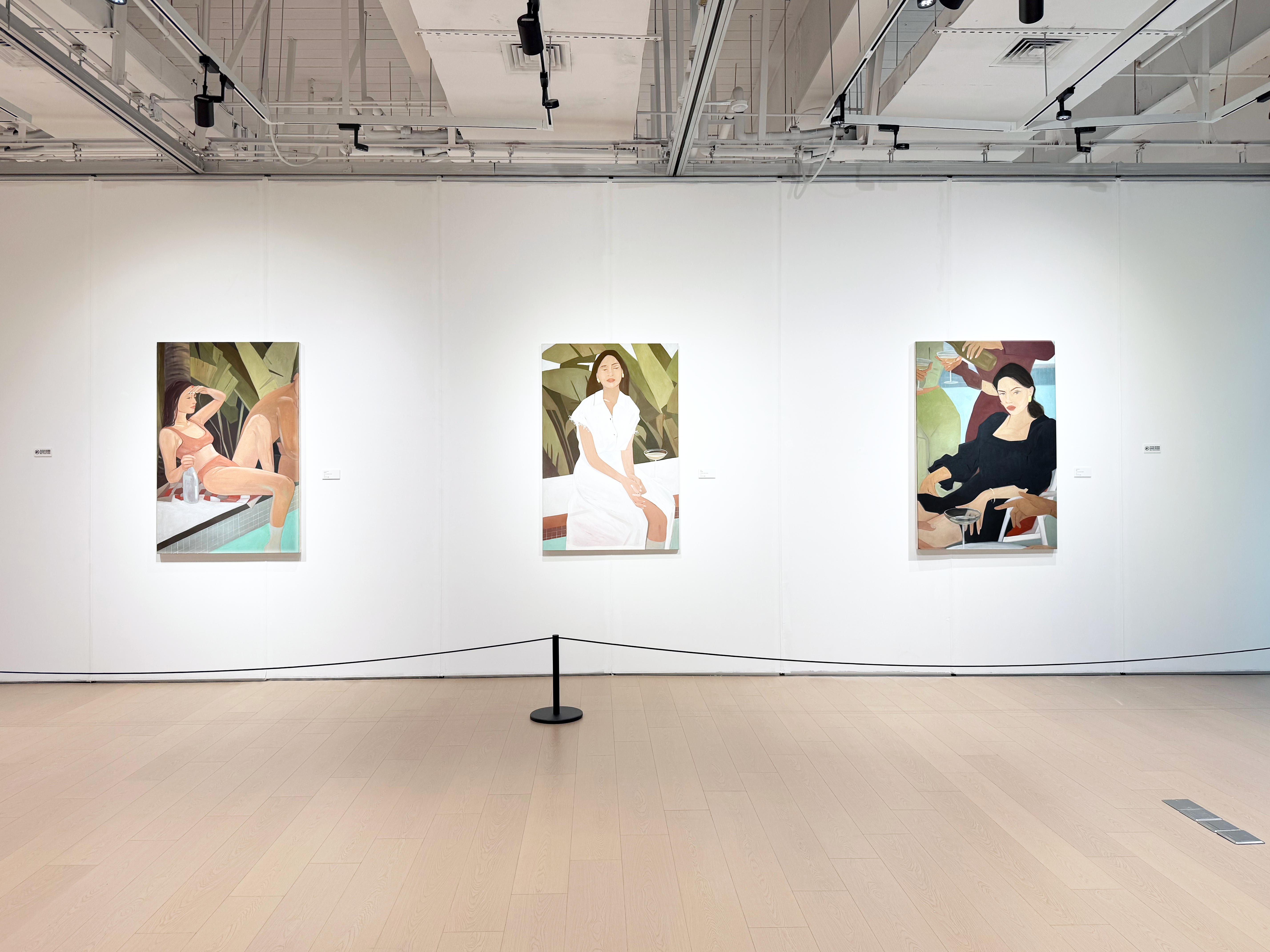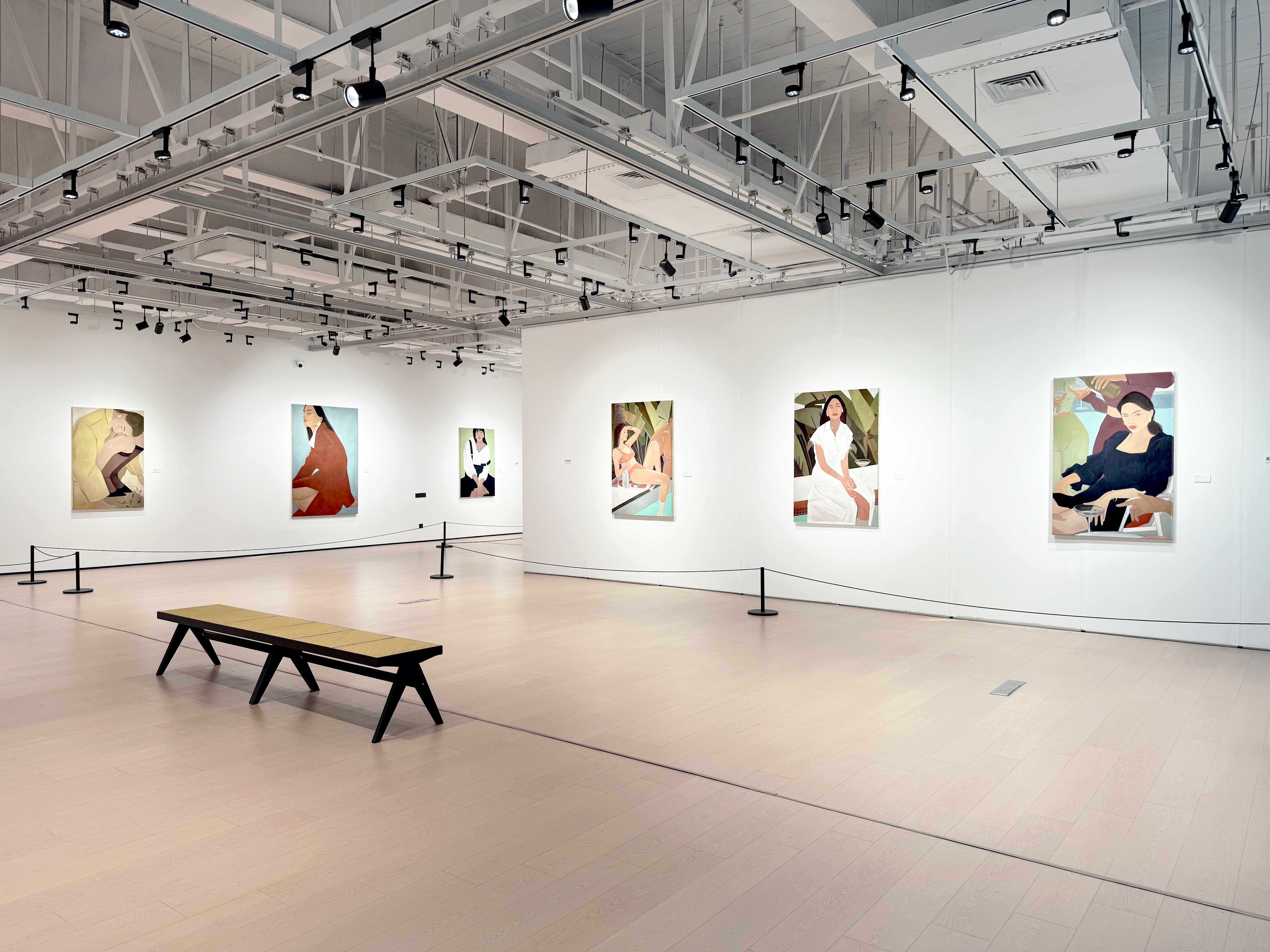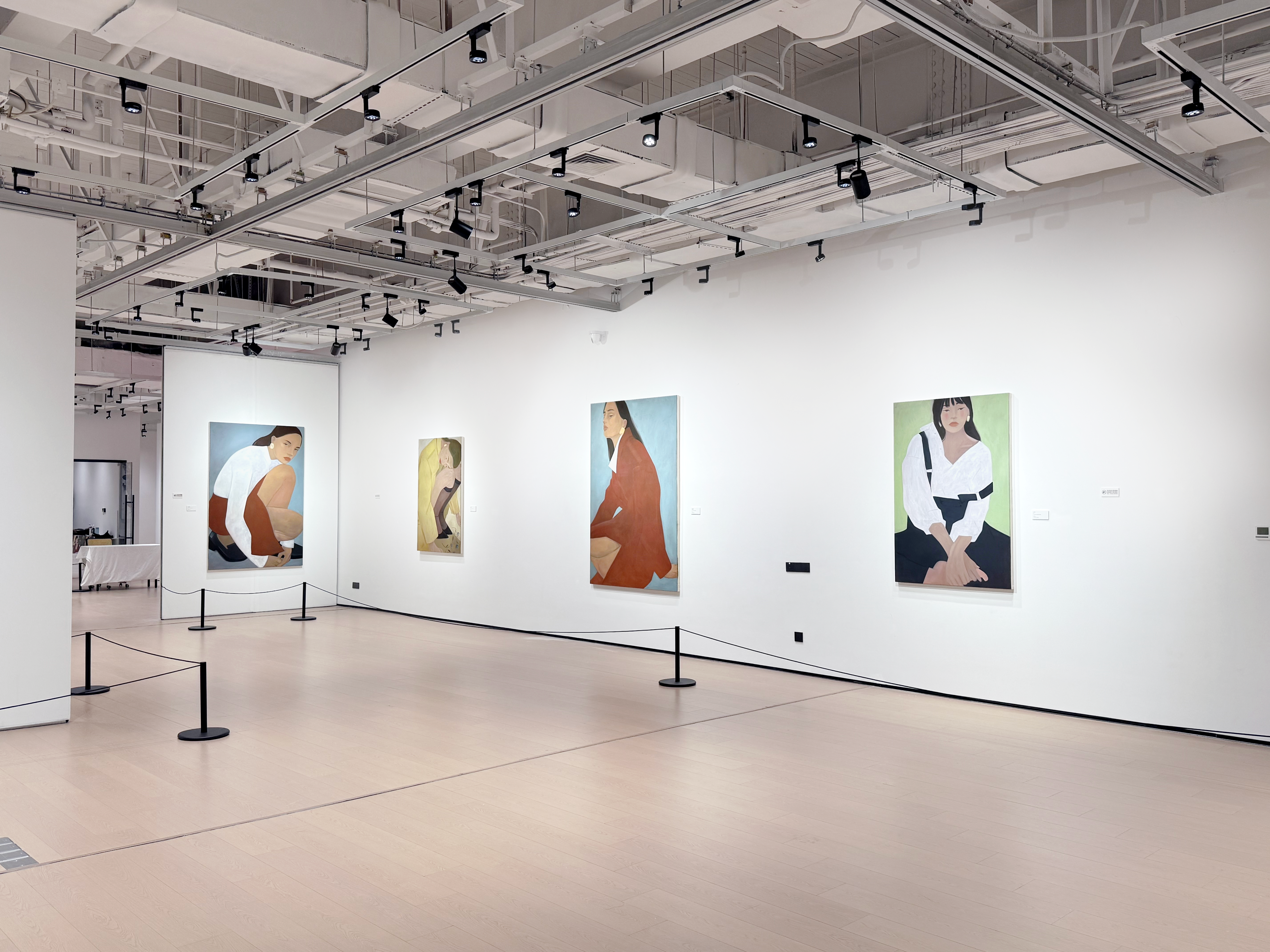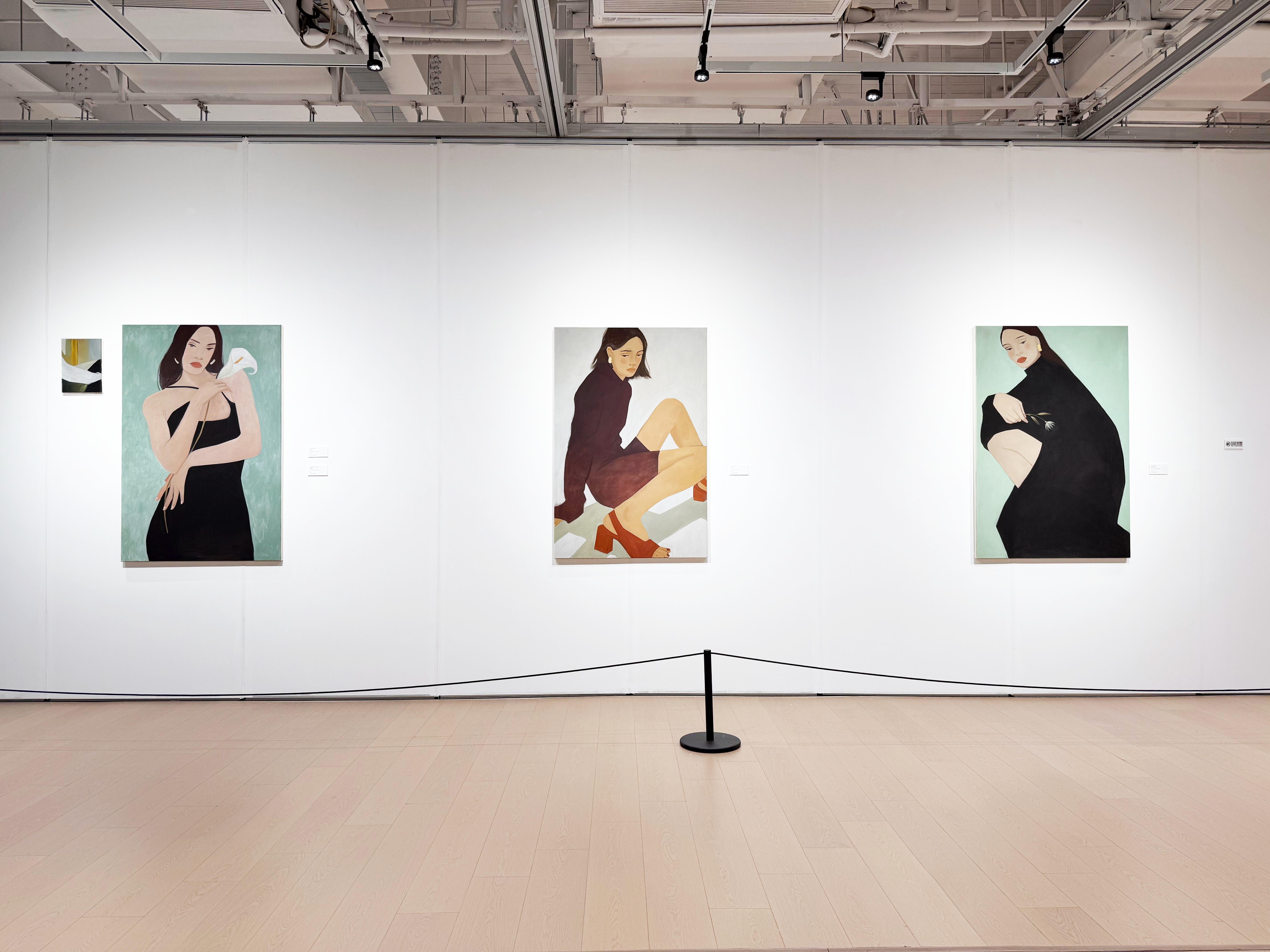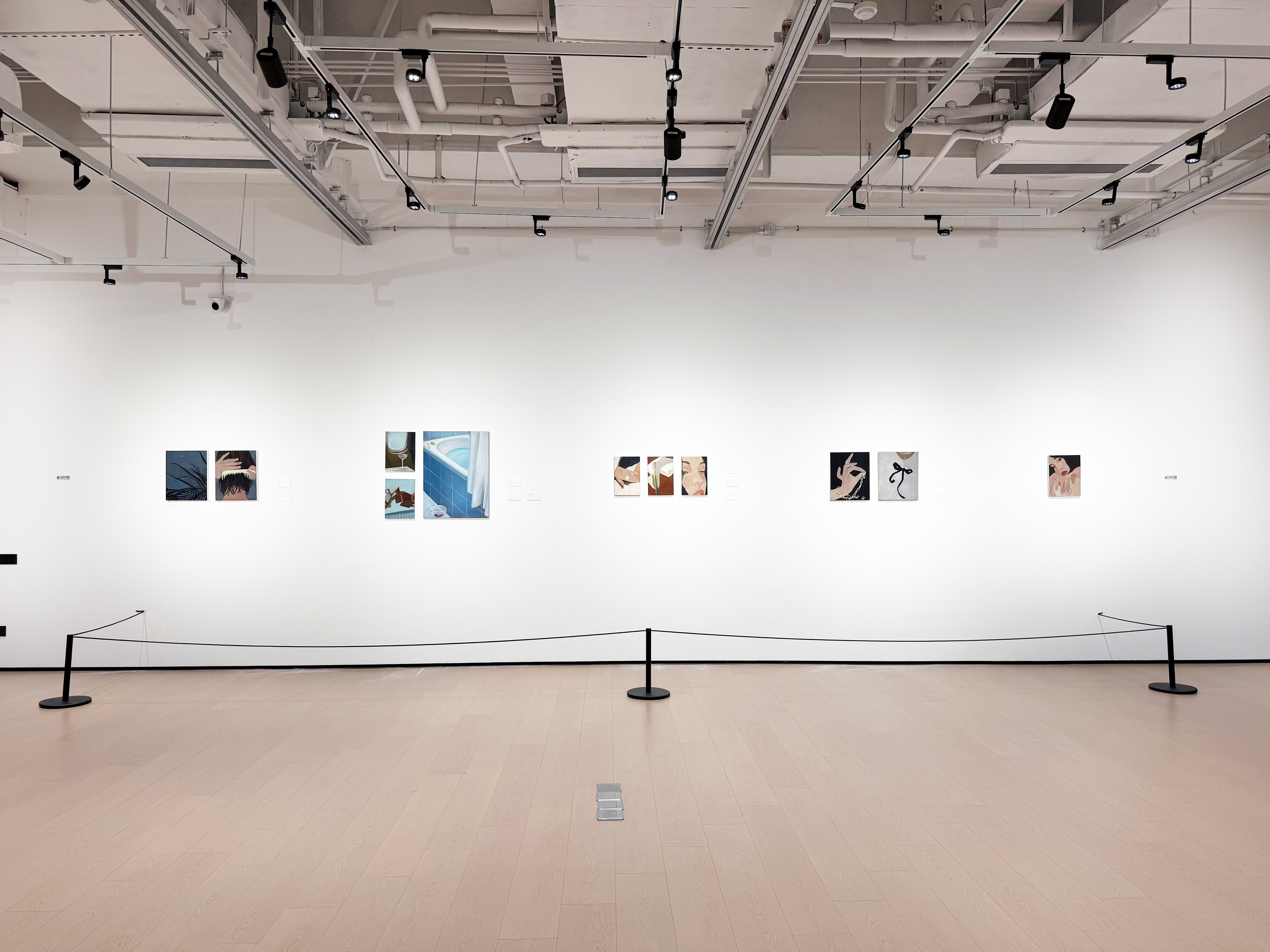The Corridor Foundation and the 11 Contemporary Art Center are pleased to present the inaugural solo exhibition in Asia by Jenya Datsko, a participant in our Young Artists Program, titled Her Unlocked Suitcase. This exhibition presents her works from 2024-2025 and a new series created exclusively for this event. Through the metaphor of the "unlocked suitcase," it explores female survival strategies and creative practices within liminal spaces, highlighting how individuals renegotiate their relationships with themselves and the world at the intersection of time, space, and identity. Rather than focusing on direct "arrival," the exhibition emphasizes the significance of transition. The metaphor of the "unlocked latch" suggests that true belonging can emerge from unfinished, fluid experiences, providing an opportunity to redefine one's relationship with the world.
The concept of liminality ¹, introduced by anthropologist Victor Turner, refers to a transitional state between two social structures or stages. This exhibition reinterprets it as more than just a temporary phase, applying it to the daily lives of females. It frames this state as a significant domain where personal experiences generate new cognitive frameworks and modes of connection. In an efficiency-driven era, life is often viewed as linear. However, females’ experiences challenge this rigidity: they create belonging amidst displacement, navigate the ambiguity of past and future, and reconstruct narratives at the intersection of memory and reality. Together, these experiences give rise to a poetics of crevices—a capacity to embrace uncertainty and transform ruptures into connections.
In this exhibition, the artist avoids a linear narrative. Some works use a fragmented perspective, resembling memory fragments. Protagonists are placed in an unfamiliar setting, far from home and comfort. The estrangement hinders them integration into the environment. Using minimalist symbols and geometric elements, the artist depicts solitary characters to capture the moment between past and future. This reflection on “what was” and “what will be” is uncertain, but it creates opportunities for the protagonists' connection with the world. Seeking order during reorganization can inspire new life phases.
We invite the audience to explore the artist's liminal crevices, experiencing undefined moments and finding connections within interstitial spaces. This exhibition explores both the experiences of females and how individuals during times of uncertainty can embrace ambiguity and re-imagine a sense of belonging.
¹ In anthropology, liminality (from Latin limen 'a threshold') is the quality of ambiguity or disorientation that occurs in the middle stage of a rite of passage, when participants no longer hold their pre-ritual status but have not yet begun the transition to the status they will hold when the rite is complete. During a rite's liminal stage, participants "stand at the threshold" between their previous way of structuring their identity, time, or community, and a new way (which completing the rite establishes). The concept of liminality was first developed in the early twentieth century by folklorist Arnold van Gennep and later taken up by Victor Turner. More recently, usage of the term has broadened to describe political and cultural change as well as rites.
